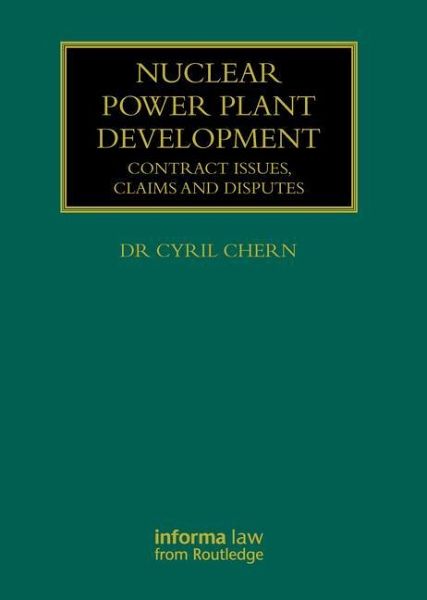Analysis: Trump Team's Push For Rapid Nuclear Power Plant Development

Table of Contents
Economic Drivers and Incentives for Accelerated Development
The Trump administration's drive for rapid nuclear power plant development was fueled by a combination of economic incentives and strategic goals.
Financial Incentives and Subsidies
The administration implemented several financial incentives to stimulate private sector investment in nuclear power. These included:
- Tax Breaks: Significant tax credits and deductions were offered to companies investing in new nuclear power plants or upgrading existing facilities. Estimates suggest billions of dollars in tax relief were potentially available.
- Loan Guarantees: The Department of Energy offered loan guarantees to mitigate the financial risks associated with the substantial upfront investment costs of nuclear power plant construction. This reduced the burden on private investors.
- Direct Subsidies: In some cases, direct government subsidies were provided to support research and development of advanced reactor technologies.
The intended impact was a revitalization of the domestic nuclear industry, creating high-skilled jobs in engineering, construction, and operations. However, the actual effectiveness of these incentives and their overall cost to taxpayers remain subjects of ongoing debate and require further economic analysis. A comprehensive cost-benefit analysis considering long-term operational costs and potential decommissioning expenses is crucial for a complete understanding.
- Example: The estimated cost of the loan guarantee program and the actual return on investment for taxpayers remain unclear, requiring further investigation. Detailed case studies are needed to assess the effectiveness of individual incentive programs.
Energy Independence and National Security Arguments
A core argument for accelerated nuclear power plant development was enhancing US energy independence and national security. The administration emphasized reducing reliance on foreign energy sources, viewing nuclear power as a stable and domestically sourced energy solution.
- Increased Grid Stability: Nuclear power plants provide a consistent and reliable baseload power, contributing to grid stability and reducing reliance on fluctuating renewable energy sources.
- Reduced Energy Imports: Increased domestic nuclear power generation could potentially lead to a reduction in the need to import energy, bolstering national energy security.
However, critics point out potential vulnerabilities. A heavy reliance on nuclear power concentrates energy production and could make the power grid vulnerable to large-scale disruptions from cyberattacks or physical damage. A comprehensive risk assessment considering both benefits and vulnerabilities is crucial.
- Data Point: While data on reduced energy imports during the Trump administration are available, a direct causal link solely attributable to the increased focus on nuclear power requires careful consideration of other contributing factors.
Technological and Regulatory Hurdles to Rapid Deployment
Despite the economic incentives, the rapid deployment of nuclear power plants faced significant technological and regulatory challenges.
Nuclear Reactor Technology and Innovation
The Trump administration expressed interest in advanced reactor designs, including small modular reactors (SMRs) and other innovative technologies. These reactors were presented as offering enhanced safety features, potentially lower construction costs, and improved efficiency compared to traditional large-scale reactors.
However, these technologies were still in the early stages of development, presenting significant technological hurdles to overcome before widespread deployment became feasible.
-
Challenges: Developing, testing, and certifying new reactor designs requires extensive research, development, and regulatory approvals, adding to the complexity of rapid deployment.
-
Safety and Security: Ensuring the safety and security of advanced reactor designs is paramount and requires rigorous testing and regulatory oversight.
-
Specific Examples: The development of SMR technology requires addressing issues related to scalability, manufacturing, and waste management. Each reactor type necessitates separate regulatory review and approval.
Regulatory Processes and Permitting
Streamlining the regulatory approval process for nuclear power plants was presented as a key component of the administration's strategy. Accelerated permitting was intended to reduce delays and speed up construction timelines.
However, the accelerated permitting process raised concerns about potential compromises on environmental protection and public safety. The balance between speed and thorough regulatory review remained a key point of contention.
- Permitting Timelines: Comparing permitting timelines under the Trump administration with previous administrations reveals variations in process duration, necessitating a detailed analysis of the impact on project completion times.
- Public Hearings: Ensuring meaningful public participation and engagement throughout the regulatory process is essential to address public concerns regarding safety and environmental impact.
Environmental and Public Opinion Considerations
The environmental and public perception of nuclear power significantly impacted the feasibility of the administration's rapid deployment strategy.
Nuclear Waste Disposal
The challenge of long-term nuclear waste storage and disposal remains a significant hurdle to wider acceptance of nuclear power. The administration did not introduce fundamentally new solutions to this longstanding problem.
- Waste Types: Managing different types of nuclear waste, from low-level to high-level radioactive material, poses distinct logistical and safety challenges.
- Long-Term Storage: Finding safe and sustainable long-term storage solutions for high-level radioactive waste remains a critical unresolved issue.
Public concern persists about potential environmental risks associated with long-term storage solutions and the potential for accidents or security breaches.
Public Perception and Acceptance of Nuclear Power
Public perception and acceptance of nuclear power play a crucial role in its successful deployment. While some view nuclear power as a clean and reliable energy source, others express concerns about safety, waste disposal, and the potential for accidents.
- Public Opinion Polling: Tracking public opinion on nuclear power through surveys and polls reveals shifting public attitudes, impacted by factors like technological advancements, accidents, and media coverage.
- Media Influence: The role of media in shaping public perceptions of nuclear power, often emphasizing both risks and benefits, needs to be carefully considered.
Conclusion
The Trump administration's push for rapid nuclear power plant development was a complex policy initiative with significant implications for US energy policy. While the administration sought to enhance energy independence and stimulate economic growth, the effort confronted substantial technological, regulatory, and public perception hurdles. The long-term success of this strategy remains uncertain, particularly given the ongoing challenges related to waste disposal, public trust, and the technological complexities of rapid deployment. Continued monitoring and analysis of the long-term impacts of this ambitious initiative are crucial for understanding its lasting effects on the future of energy production in the United States. To stay informed on the latest developments in rapid nuclear power plant development and its related challenges, follow reputable sources and energy policy analyses.

Featured Posts
-
 Is Betting On The La Wildfires A Sign Of The Times
May 10, 2025
Is Betting On The La Wildfires A Sign Of The Times
May 10, 2025 -
 Casey Means A Deep Dive Into Trumps Surgeon General Nomination
May 10, 2025
Casey Means A Deep Dive Into Trumps Surgeon General Nomination
May 10, 2025 -
 Behind The Scenes With Judge Jeanine Pirro Fears And A Personal Confession
May 10, 2025
Behind The Scenes With Judge Jeanine Pirro Fears And A Personal Confession
May 10, 2025 -
 Weston Cage Coppola Remains Defendant In Father Nicolas Cages Lawsuit
May 10, 2025
Weston Cage Coppola Remains Defendant In Father Nicolas Cages Lawsuit
May 10, 2025 -
 Draisaitl Reaches Century Mark Oilers Edge Islanders In Ot
May 10, 2025
Draisaitl Reaches Century Mark Oilers Edge Islanders In Ot
May 10, 2025
